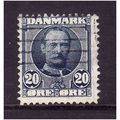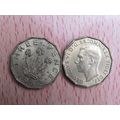Soissons, Aisne, France - Rue du College - RP postcard c.1960s
- Condition : Used
- Dispatch : 2 Days
- Brand : None
- ID# : 207540264
- Quantity : 1 item
- Views : 133
- Location : United Kingdom

- Seller : justthebook (+1703)
- Barcode : None
- Start : Mon 04 Apr 2022 13:53:32 (BST)
- Close : Run Until Sold
- Remain : Run Until Sold
More Listings from This Seller view all
Seller's Description
- Postcard
- Picture / Image: Soissons (Aisne) France - Rue du College
- Publisher: La Cigogne, Reims
- Postally used: no
- Stamp: n/a
- Postmark(s): n/a
- Sent to: n/a
- Notes / condition:
Please ask if you need any other information and I will do the best I can to answer.
Image may be low res for illustrative purposes - if you need a higher definition image then please contact me and I may be able to send one. No cards have been trimmed (unless stated).
------------------------------------------------
Postage & Packing:
Postage and packing charge should be showing for your location (contact if not sure).
No additional charges for more than one postcard. You can buy as many postcards from me as you like and you will just pay the fee above once. Please wait for combined invoice. (If buying postcards with other things such as books, please contact or wait for invoice before paying).
Payment Methods:
UK and all other locations - PayPal or other methods listed above.
NOTE: All postcards are sent in brand new stiffened envelopes which I have bought for the task. These are specially made to protect postcards and you may be able to re-use them.
I will give a full refund if you are not fully satisfied with the postcard.
----------------------------------------------
Text from the free encyclopedia WIKIPEDIA may appear below to give a little background information (internal links may not work) :
*************
Soissons (French pronunciation: [swasɔ̃]) is a commune in the northern French department of Aisne, in the region of Hauts-de-France. Located on the Aisne River, about 100 kilometres (62 mi) northeast of Paris, it is one of the most ancient towns of France, and is probably the ancient capital of the Suessiones. Soissons is also the see of an ancient Roman Catholic diocese, whose establishment dates from about 300, and it was the location of a number of church synods called "Council of Soissons".
Soissons enters written history under its Celtic name (as later borrowed in Latin), Noviodunum, meaning "new hillfort". At Roman contact, it was a town of the Suessiones, mentioned by Julius Caesar (B. G. ii. 12). Caesar (B.C. 57), after leaving the Axona (modern Aisne), entered the territory of the Suessiones, and making one day's long march, reached Noviodunum, which was surrounded by a high wall and a broad ditch. The place surrendered to Caesar.
From 457 to 486, under Aegidius and his son Syagrius, Noviodunum was the capital of the Kingdom of Soissons,[2] until it fell to the Frankish king Clovis I in 486 after the Battle of Soissons.
Part of the Frankish territory of Neustria, the Soissons region, and the Abbey of Saint-Médard, founded in the 6th century, played an important political part during the rule of the Merovingian kings (A.D. 447–751). After the death of Clovis I in 511, Soissons was made the capital of one of the four kingdoms into which his states were divided. Eventually, the kingdom of Soissons disappeared in 613 when the Frankish lands were amalgamated under Chlothar II.
The 744 Council of Soissons met at the instigation of Pepin the Short and Saint Boniface, the Pope's missionary to pagan Germany, secured the condemnation of the Frankish bishop Adalbert and the Irish missionary Clement.[3]
During the Hundred Years' War, French forces committed a notorious massacre of English archers stationed at the town's garrison, in which many of the French townsfolk were themselves raped and killed.[4] The massacre of French citizens by French soldiers shocked Europe; Henry V of England, noting that the town of Soissons was dedicated to the saints Crispin and Crispinian, claimed to avenge the honour of the saints when he met the French forces at the Battle of Agincourt on Saint Crispin's Day 1415. The town was liberated by French troops under the command of Joan of Arc on July 23, 1429.
Between June 1728 and July 1729 it hosted the Congress of Soissons an attempt to resolve a long-standing series of disputes between the Kingdom of Great Britain and Spain which had spilled over into the Anglo-Spanish War of 1727–1729. The Congress was largely successful and led to the signing of a peace treaty between them.
During World War I, the city came under heavy bombardment. There was mutiny after the disastrous Chemin des Dames offensive at the Second Battle of the Aisne. A statue erected with images of French soldiers killed in action in 1917 is behind the St Peter's Church, next to the Soissons Courthouse.
Listing Information
| Listing Type | Gallery Listing |
| Listing ID# | 207540264 |
| Start Time | Mon 04 Apr 2022 13:53:32 (BST) |
| Close Time | Run Until Sold |
| Starting Bid | Fixed Price (no bidding) |
| Item Condition | Used |
| Bids | 0 |
| Views | 133 |
| Dispatch Time | 2 Days |
| Quantity | 1 |
| Location | United Kingdom |
| Auto Extend | No |



 for 1 item(s)
for 1 item(s)















